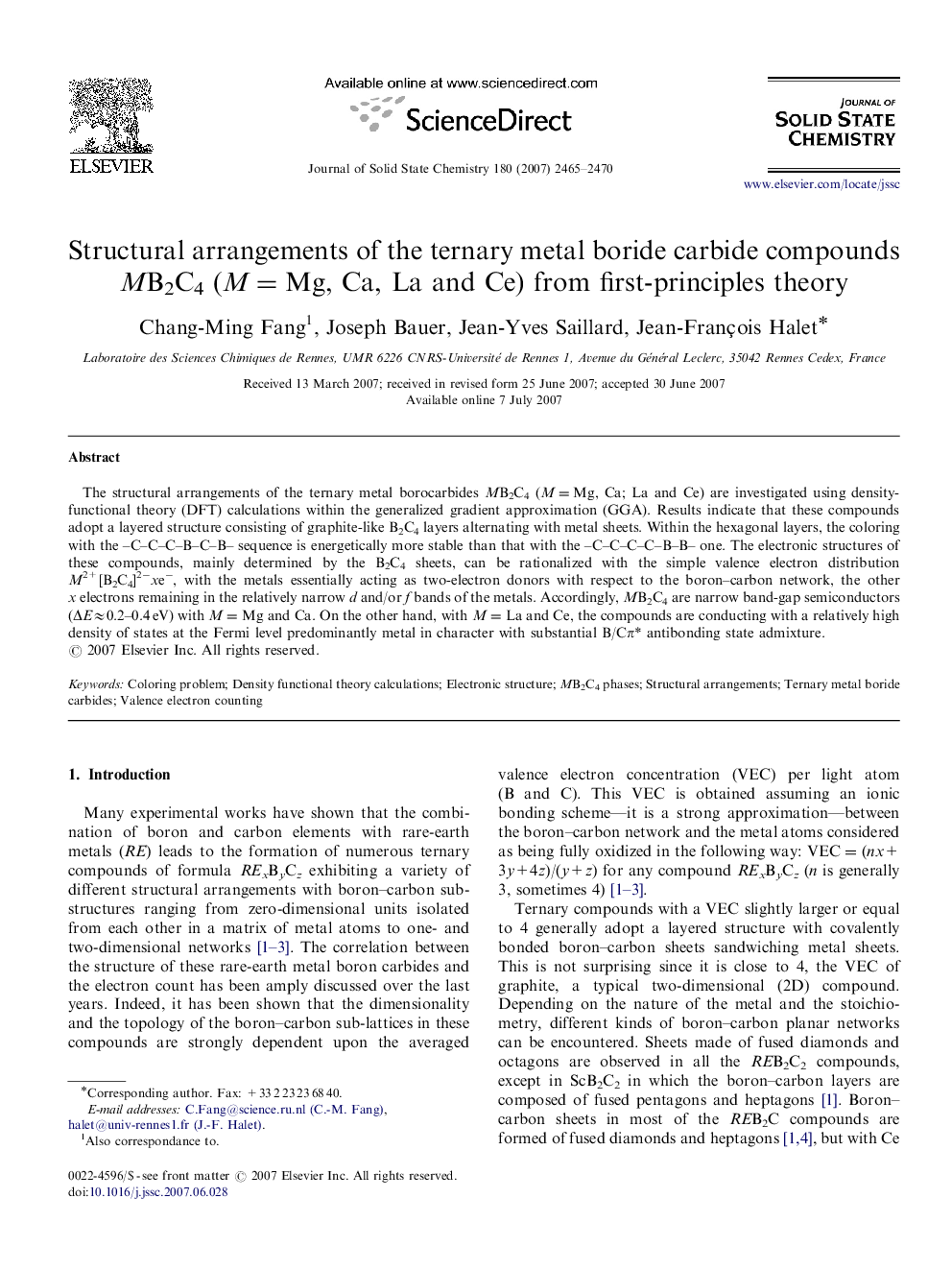| Article ID | Journal | Published Year | Pages | File Type |
|---|---|---|---|---|
| 1333777 | Journal of Solid State Chemistry | 2007 | 6 Pages |
The structural arrangements of the ternary metal borocarbides MB2C4 (M=Mg, Ca; La and Ce) are investigated using density-functional theory (DFT) calculations within the generalized gradient approximation (GGA). Results indicate that these compounds adopt a layered structure consisting of graphite-like B2C4 layers alternating with metal sheets. Within the hexagonal layers, the coloring with the –C–C–C–B–C–B– sequence is energetically more stable than that with the –C–C–C–C–B–B– one. The electronic structures of these compounds, mainly determined by the B2C4 sheets, can be rationalized with the simple valence electron distribution M2+[B2C4]2−xe−, with the metals essentially acting as two-electron donors with respect to the boron–carbon network, the other x electrons remaining in the relatively narrow d and/or f bands of the metals. Accordingly, MB2C4 are narrow band-gap semiconductors (ΔE≈0.2–0.4 eV) with M=Mg and Ca. On the other hand, with M=La and Ce, the compounds are conducting with a relatively high density of states at the Fermi level predominantly metal in character with substantial B/Cπ* antibonding state admixture.
Graphical abstractDensity-functional theory calculations on the structural arrangements of the ternary metal borocarbides MB2C4 (M=Mg, Ca; La and Ce) indicate that these compounds adopt a layered structure consisting of graphite-like B2C4 layers alternating with metal sheets. Within the hexagonal layers, the coloring with the –C–C–C–B–C–B– sequence is energetically more stable than that with the –C–C–C–C–B–B– one.Figure optionsDownload full-size imageDownload as PowerPoint slide
